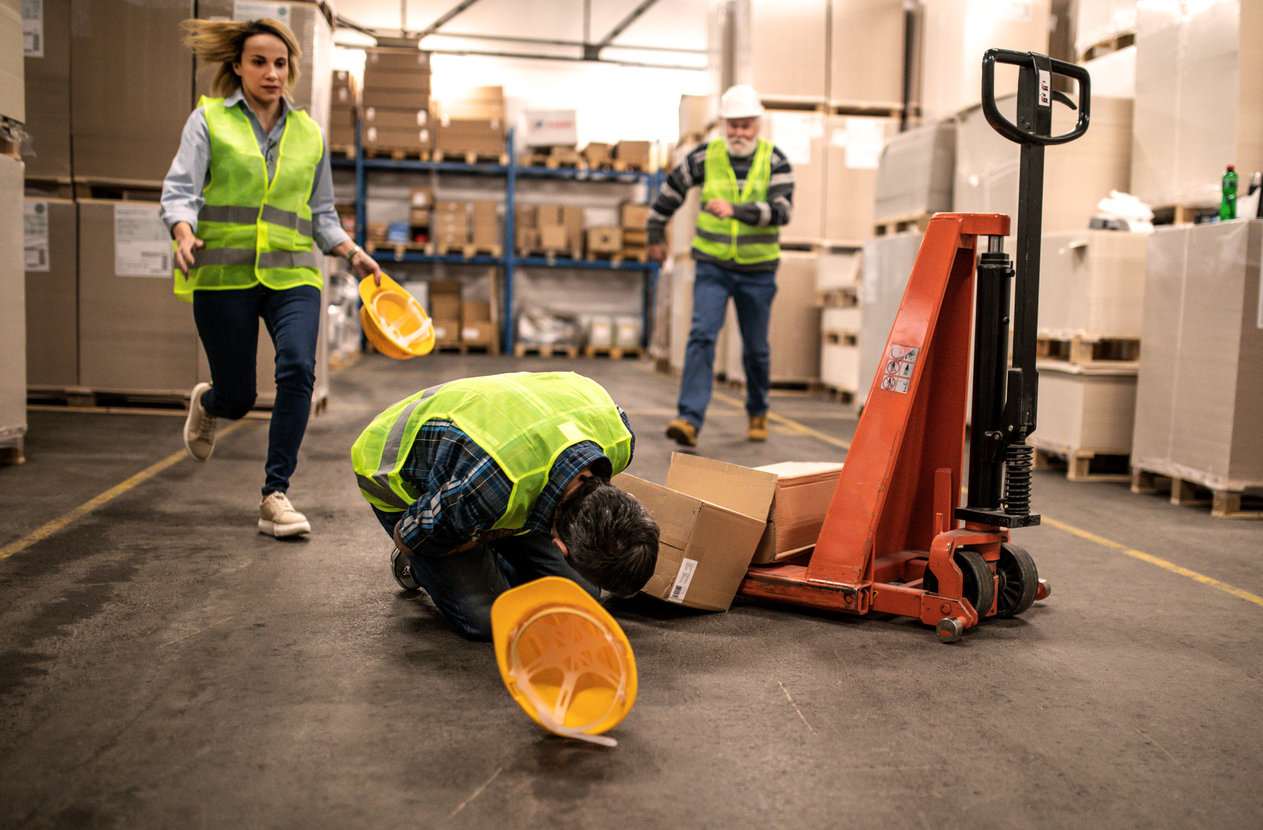
Legionella bacteria are responsible for causing Legionnaires’ disease, a serious form of pneumonia that can be fatal if not diagnosed and treated early. The bacteria thrive in water systems and can spread through water droplets in the air. In the workplace, the risk of Legionella exposure is particularly concerning in environments where water systems are poorly managed or not regularly maintained. As an employer, it is essential to understand your responsibilities regarding Legionella control, to ensure the health and safety of your staff and visitors.
What is Legionella?
Legionella is a type of bacteria found naturally in water sources such as rivers, lakes and reservoirs. However, the bacteria can become a health risk when they grow and multiply in artificial water systems such as hot and cold water systems, air conditioning units, cooling towers and showers.
When people inhale fine water droplets (aerosols) containing Legionella bacteria, they can develop Legionnaires’ disease, a severe form of pneumonia. Symptoms include cough, shortness of breath, chest pain, fever and muscle aches. Another related condition, Pontiac fever, is a milder flu-like illness, which can also be caused by Legionella exposure but is generally less serious.
The bacteria are most dangerous in warm water environments (between 20°C and 45°C), where they can multiply rapidly. This is why Legionella control is particularly important in workplaces with complex water systems, such as hospitals, hotels, factories and office buildings.
The legal responsibilities of employers
Under the Health and Safety at Work Act 1974 and the Control of Substances Hazardous to Health (COSHH) Regulations, employers have a legal obligation to protect the health and safety of their employees and others who may be affected by their work activities.
The Management of Health and Safety at Work Regulations (MHSWR) 1999 provide a broad framework for controlling health and safety at work.
The Health and Safety Executive (HSE) provides specific guidance on controlling the risks of Legionella through HSG274 and L8 – The Approved Code of Practice contains practical guidance on how to Control of Legionella Bacteria in Water Systems.
The key legal requirements for employers include:
- Risk assessment: Employers must carry out a thorough risk assessment to identify potential Legionella hazards within their workplace. This includes reviewing the water systems, understanding the water temperatures and assessing how water is distributed throughout the building.
- Appointment of a responsible person: Employers should appoint a competent person (often referred to as the ‘responsible person’) who has the specific task of managing Legionella control measures. This person must have the necessary training, experience and knowledge to oversee risk assessments, maintenance and testing. This person is appointed by the Duty Holder (the business owner or managing director) and is responsible for implementing and monitoring the Legionella Management Plan (LMP). This person should have sufficient authority, competence and knowledge of the water systems and relevant regulations.
- Preventative measures: Once risks have been identified, employers must take appropriate action to prevent Legionella growth. This can involve a variety of control measures, such as maintaining water temperature, regular cleaning and disinfection and preventing the stagnation of water.
- Monitoring and maintenance: If you have 5 or more employees, you have to record any significant findings, including those identified as being particularly at risk and the steps taken to prevent or control risks. If you have fewer than 5 employees, you don’t need to write anything down, although it is useful to keep a written record of what you’ve done.Water systems must be regularly monitored and maintained to ensure they remain free from Legionella. This includes maintaining water temperatures outside the bacteria’s growth range, cleaning and descaling water tanks and monitoring water quality.
- Record keeping: Employers must maintain detailed records of all risk assessments, control measures, inspections, maintenance activities and water temperature logs. This helps demonstrate compliance with legal obligations and provides a clear history of actions taken to control Legionella. These records should be retained throughout the period for which they remain current and for at least 2 years after that period. Records kept in accordance with the results of any monitoring inspection should be retained for at least 5 years.
- Training: Employers should ensure that employees, particularly those involved in water system maintenance, receive adequate training on Legionella risks and control procedures. Awareness training for all staff can also help prevent the spread of bacteria through poorly maintained systems.
Identifying the risks
To control Legionella effectively, employers must first identify the risks associated with their workplace water systems. The main factors that promote Legionella growth include:
- Temperature: Legionella thrives in temperatures between 20°C and 45°C. Hot water systems should be kept at a minimum of 60°C to kill any bacteria, while cold water systems should be kept below 20°C to inhibit growth.
- Stagnation: Stagnant water, particularly in infrequently used taps, tanks and pipes, provides an ideal environment for Legionella to multiply. Regular use of all parts of the water system can reduce this risk.
- Biofilms: A biofilm is a slimy layer of bacteria and other microorganisms that can form inside pipes and tanks. Legionella can thrive in these biofilms, making regular cleaning and disinfection important.
- Aerosols: Activities that create water aerosols, such as showers, air conditioning systems, cooling towers or whirlpool baths, increase the risk of Legionella transmission. Ensuring these systems are regularly maintained and that water temperatures are properly controlled is essential.
Legionella control measures
Once the risks are identified, employers should implement control measures to prevent the growth and spread of Legionella. The following steps are commonly recommended:
1. Water temperature control
Hot water should be stored at a minimum of 60°C and systems should be designed to ensure that water at the point of use reaches at least 50°C.
Cold water should be stored at below 20°C and water pipes should be insulated to maintain this temperature and prevent warm spots.
2. Regular flushing and cleaning
Ensure that taps, showers and other water outlets are regularly used or flushed to prevent stagnation. In areas where outlets are rarely used, consider installing a flushing schedule to ensure water is regularly circulated.
Clean and disinfect water tanks, pipes and other systems periodically to remove any sediment, sludge or biofilms where Legionella may thrive.
3. Regular inspection and maintenance
Regularly inspect and maintain water systems to ensure they are functioning correctly. This includes checking for leaks, ensuring water temperatures are within safe ranges and cleaning systems as needed.
4. Water treatment
Use biocides or other treatments to control microbial growth in water systems, especially in cooling towers, which are common sources of Legionella outbreaks.
5. Air handling and cooling systems
In workplaces with air conditioning or cooling towers, ensure these systems are maintained to prevent the spread of Legionella through aerosols. This includes regular cleaning, disinfection and ensuring proper water treatment is in place.
6. Monitoring and testing
Regularly test water systems for Legionella bacteria to ensure they are within safe levels. The frequency of testing will depend on the risk assessment and the size of the water system, but it is generally recommended at least every three to six months.
Training and awareness
One of the most crucial aspects of Legionella control is ensuring that all employees, particularly those with responsibilities for managing or maintaining water systems, receive the proper training. This training should cover:
- How to identify potential Legionella risks in the workplace.
- The correct procedures for monitoring water temperatures and system maintenance.
- The proper use of personal protective equipment (PPE) when handling or cleaning water systems.
- How to respond to an outbreak or suspected case of Legionnaires’ disease.


